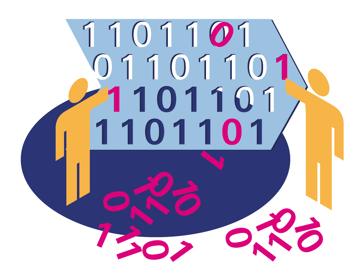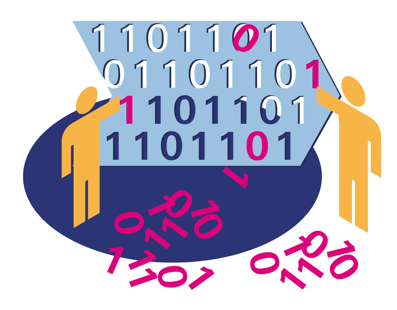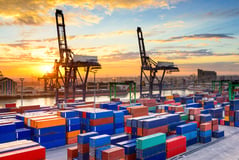Are You Ready for Your Digital Transformation?
Brian Hoey - April 25, 2019

 How many of you reading this remember the skepticism that came with the release of Apple’s first iPad? It may seem strange now, given how ubiquitous these pieces of technology have proven to be, but there were plenty of detractors of this early tablet: was it just a large iPhone that couldn’t make phone calls? Or a tiny MacBook without a keyboard? What was the point, and who would gain any real value from such a thing? Nowadays, those objections seem misguided. Why? Because we’ve seen the ways in which iPads and similar tablets have transformed numerous processes across various industries, starting with Apple’s own stores: instead of cash registers at the ends of individual checkout lines, Apple sales and support staff use iPads not just to ring up completed transactions, but to check in customers for their appointments and gather additional data about their needs or issues.
How many of you reading this remember the skepticism that came with the release of Apple’s first iPad? It may seem strange now, given how ubiquitous these pieces of technology have proven to be, but there were plenty of detractors of this early tablet: was it just a large iPhone that couldn’t make phone calls? Or a tiny MacBook without a keyboard? What was the point, and who would gain any real value from such a thing? Nowadays, those objections seem misguided. Why? Because we’ve seen the ways in which iPads and similar tablets have transformed numerous processes across various industries, starting with Apple’s own stores: instead of cash registers at the ends of individual checkout lines, Apple sales and support staff use iPads not just to ring up completed transactions, but to check in customers for their appointments and gather additional data about their needs or issues.
The above is an example of a digital transformation, i.e. an instance in which a new technology does more than take the place of an old one—it empowers new processes that add value in new ways. The Apple Store’s entire sales flow is built around these tablets, and the result is a level of ease and efficiency for the user that simply wouldn’t be feasible otherwise. This has been Apple’s modus operandi for a while now, and we’re increasingly seeing similar technologically-empowered workflows elsewhere in the retail world. Of course, retail isn’t the only space that’s ripe for digital transformation right now. The automotive supply chain, for instance, is also at a technological crossroads where new digital technologies can be leveraged into reimagined processes.
Digitization vs. Digital Transformation
Let’s take a quick step back. We gave an example of digital transformation above, but what exactly is our working definition of the concept? Essentially, a digital transformation occurs when digital technology enables a business to create new, more efficient, often data-driven processes that add value in ways that would have been impossible even a few years ago. Netflix offers us another example of a digital transformation: as streaming technology became more reliable, the business put new emphasis on its online platform, developing a complex algorithm for turning user data and ratings into personalized suggestions. Amazon offers us even more examples—in too many areas to count, frankly.
This isn’t to be confused with digitization, which is a separate (though related) process. Where digital transformation refers to actual change and evolution in business processes, digitization is simply the process by which physical records and data are made digital. Digitization is often used interchangeably with digitalization, which refers to the process of replacing physical processes with digital ones. These are both important steps that can lead up to a digital transformation, and they include things like adopting digital planning interfaces or comprehensive databases for production or customer information. These changes pave the way for a larger reimagining of existing workflows.
The Changing Face of the Automotive Supply Chain
So, what does digital transformation look like in the automotive industry? Well, for starters, the car-buying process on the consumer’s side is changing rapidly to involve more online research and fact-finding than ever before. This means a change in expectations and an increased push towards transparency for dealers, but for auto manufacturers themselves this change is increasingly leading to new kind of customer relationship. With increasingly connected and transparent value chains, manufacturers can provide interested buyers with more information than ever before, and they’re quickly realizing that customers place a real value on this information. Some businesses are even putting processes in place to let car buyers choose specifications and even purchase vehicles directly from manufacturers’ websites. This requires auto manufacturers to be able to provide transparent information into stock availabilities, pricing, and other factors that might have been hard to instantaneously account for in a pre-digital era.
Perhaps the most interesting example here is the rise of customization within the automotive supply chain. As the supply chain has become increasingly digital, it has, as a result, become increasingly modular and decentralized. This depends on a high degree of visibility in order to preserve efficiency, but the result is typically a more adaptable overall value stream. Because of the smart, adaptable capabilities of your average digital supply chain, manufacturers are increasingly able to offer a level of customization to consumers that would have previously been prohibitively time-consuming and expensive. Where, in previous eras, silos between sourcing and production planning made it difficult to modify existing production workflows in an efficient way, today's modern IT connects these two distinct business processes to one another (and to transport routing flows), making it possible to gain enough insight into and control over your production facility at any given moment to seamlessly incorporate custom orders into your existing plans.
How to Prepare
The above examples represent just a couple of the ways in which the automotive supply chain is undergoing digital transformations. Others include the integration of the technologies that empower autonomous vehicles, anything relating to the rise of the smart factory (aka Industry 4.0), and numerous others. As a result, many of you must be wondering what steps you can take to ensure that your supply chain is ready not just for digitization, but for transformation.
Well, as you might have guessed from the preceding paragraphs, one of the most important considerations for this topic is visibility. How well can any one team within your organization gain insight into the work being done by another team? How much data from your suppliers is integrated into your own planning workflows? How can any new piece of technology be leveraged to bring you closer to true E2E (end-to-end) visibility? Can you monitor your production and transport flows in real-time? How easy to access is any customer data you’ve collected? Your answers to these questions will give you a sense of how easy or difficult it will be to transform your ongoing digitization (and digitalization) into new, value-additive ways of doing things. If you’re already operating at a high visibility level, it’s likely that you can begin to turn your data not just into insights about existing processes, but new processes entirely. If not, you’ll need to ask yourself what steps you can take to reach this point.
LATEST POSTS
- Understand Circular Economy in The Manufacturing Industry
- How Can Industry 4.0 IT Integration Be Achieved Smoothly?
- The Significance of Order Sequencing in Discrete Manufacturing
- How to improve your Supply Chain Management: The Power of Control Towers
- Optimizing Human Resource Scheduling in Manufacturing: A Technological Approach



